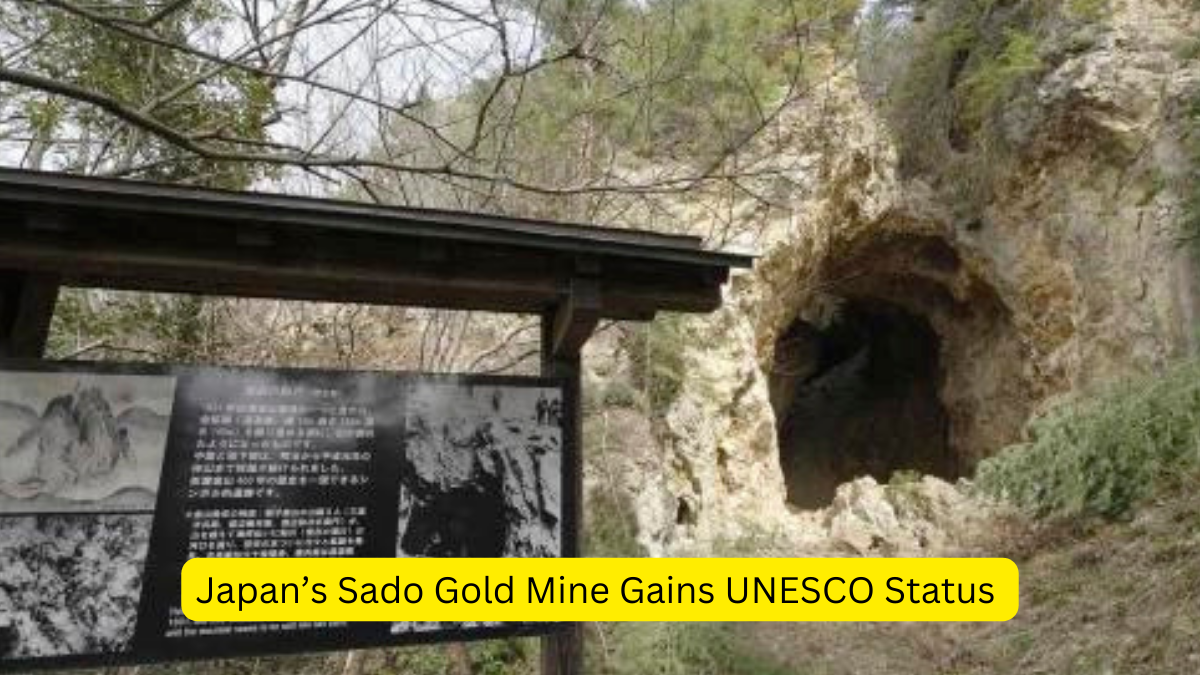The UNESCO World Heritage committee on July 27 decided to register Japan’s controversial Sado gold mine as a cultural heritage site. The country agreed to include it in an exhibit of its dark history of abusing Korean laborers during World War II. The decision signals an improvement in ties between Tokyo and Seoul.
About Sado Gold Mines
The mine on an island off the coast of Niigata in northern Japan operated for nearly 400 years and was once the world’s largest gold producer before closing in 1989. It was also linked to Japan’s wartime abuse of Korean laborers.
Support to the listing at 27th June annual meeting
Committee members, including South Korea, gave unanimous support to the listing at 27th June annual meeting in New Delhi, India. They said Japan provided additional information, made all necessary amendments to the plan and consulted with South Korea over the mine’s wartime history.
Installment of new exhibition material
The Japanese delegate told the meeting that Japan has installed new exhibition material “to explain the severe conditions of (Korean laborers’) work and remember their hardship.” Japan acknowledged that Koreans were put to more dangerous tasks in the mine shaft, which caused some to die. Many of them were also given meager food rations and nearly no days off.
Memorial service for all the workers
A memorial service for all the workers at the Sado Island gold mines will be held annually at the site, Japanese officials said. Japan’s Foreign Minister Yoko Kamikawa said in a statement that she was “truly delighted” by Sado island’s designation, underscoring its “extraordinary value as an exceptional cultural heritage.” But the minister avoided referring to the mine’s history.
Both the bright and dark side of the Sado mine
The South Korean delegation said the country expects Japan to keep its pledge to be truthful to history and to show “both the bright and dark side” of the Sado mine in order to help improve relations over the long term. In Seoul, South Korea’s foreign ministry called on Japan to continue living up to its promises on the mine and take additional steps to sustain the momentum in improving bilateral ties.
Commitment to face wartime atrocities
Japan had to demonstrate a commitment to face its wartime atrocities in order to gain support from South Korea, which had opposed the UNESCO bid because of the wartime abuse of Korean laborers. Such disputes over history that have consistently strained bilateral ties. Seoul has said some Koreans brought to Japan during its 1910-1945 colonization of the Korean Peninsula were put to forced labor at the mine.
Controversial Japanese site
Controversial Japanese site was granted UNESCO recognition in 2015. Gunkanjima, or Battleship Island, in Nagasaki prefecture, was a former coal mine site recognized as important to the Meiji Industrial Revolution in Japan. South Korea protested that the site omitted mention of Koreans toiling on the island, which triggered a UNESCO decision urging Japan to present a more balanced history.




 Operation Hawkeye: US and Jordan Strike ...
Operation Hawkeye: US and Jordan Strike ...
 India and the Netherlands Set Up Joint T...
India and the Netherlands Set Up Joint T...
 Brazil Hands Over BRICS Presidency to In...
Brazil Hands Over BRICS Presidency to In...







